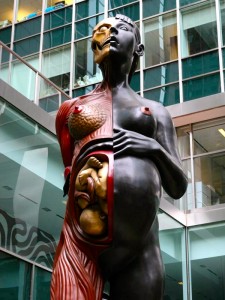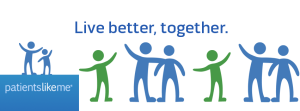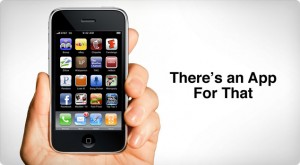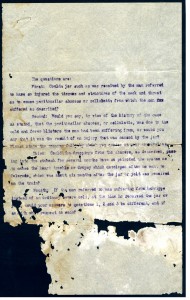Is medicine a science or an art?
Physicians and artists alike have tried to answer this question for over two thousand years. The former tend to claim that medicine is predominantly a science, and that it is an art only because it involves skills acquired by experience or observation. The latter commonly say that medicine is predominantly an art, for it evolves on the basis of human values and seeks to heal above all else.
So which is it?
It’s not a science. It’s not an art. It’s both.
Effective medicine employs science to accurately diagnose and treat, but it also utilizes art to arrange our awareness of health and healing into a storied structure. This “narrative medicine,” as it’s often called, takes a medical story and unfolds it in a way that gives meaning and purpose to both illness and the experience of recovery.
Narrative medicine, however, is not the only art form to have influenced medical storytelling. Throughout history, each introduction of digitalized technology into medicine—take the X-ray, the CT scan, and the ultrasound, for example—has utilized illustrative visualization to enhance medical accuracy.
Analogous to illustrative visualization, recent development in graphics hardware has enabled the rendering of innovative medical imaging methods that are completely changing the way that we see and study the human body. These new techniques enable both photo-realism and a technical form of hyperrealism in art in which it’s possible to enhance medical visualizations to better convey information.
But medical illustration and anatomical imaging are beginning to break out of the confines of the hospital. They are beginning to crawl into the dirty gutters and cracked sidewalks of the real world in the form of something known as street anatomy.
(photos courtesy of http://streetanatomy.com/2007/02/15/damien-hirst-anatomical-representation/ and http://vi.sualize.us/praying_street_skeleton_graffiti_street_anatomy_picture_5Qqm.html)
Street anatomists are experimenting with new mediums, such as papier mâché, graffiti, and sculpture, to portray the human body in creative new ways. Thanks to this new form of biomedical visualization, human anatomy is no longer contained within the human body. Science no longer lives in a hospital. Take a look around and you’re bound to notice your skeletal system plastered to a telephone pole or your back muscles adhered to the side of a Metro bus. You may even discover that your heart has been spray-painted on the side of your apartment complex.
I went ahead and gave street anatomy a whirl, too. Here’s what I ended up painting:


While painting these on the concrete floor of my dorm room, I was silenced by the realization of how truly incredible the human body is.
It is a wonder of science. It is a work of art.







